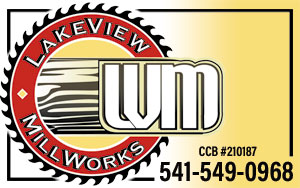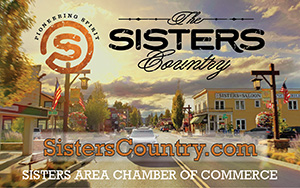The pleasures and perils of high-intensity exercise
Last updated 3/12/2013 at Noon
High-intensity exercise has taken the fitness world by storm. Whether it's Crossfit or a variant, circuit training in the gym or interval training for runners and cyclists, the protocol of short, hard workouts using a variety of exercises is attracting athletes from elites to weekend warriors.
Ryan Hudson of OlyFit in Sisters combines the original principles of Crossfit with Olympic lifting in a personalized one-on-one or very small group program. All movements are natural or "functional" - no machines, no isolation exercises. It's all full-body, core-based - run, jump, push, pull, squat. The workouts include a warm-up and cool-down period, with a blasting molten core of high-intensity work.
High intensity means the varied exercises are performed in succession with very short rest periods, pushing the heart rate and expending huge amounts of energy.
Sounds kind of, well... intense. And it is.
"High-intensity results come with a price," Hudson allows. "It's hard. It's only for people who want to change their bodies and improve their performance."
There's no shortcut; pushing limits is the name of the game.
"High intensity is what makes it work, period," Hudson says. "You take out the intensity, you don't get the results."
For a lot of folks, the hard work is attractive. The variety and compressed time - 20 minutes is the recommended maximum - mean the workouts don't get boring.
"From a consumer standpoint, it's fun," says Tate Metcalf, owner of Sisters Athletic Club. The workouts offer "big energy, big heart rate, big enthusiasm. For a certain clientele, that's what they want."
But Metcalf is leery of the popularity of this style of exercise.
"I wish more people did less high-intensity exercise as their main form of exercise," he says.
Metcalf still believes that the most important element of fitness is cardio, and that requires lower-intensity, steady state work.
"Absolutely, cardio is number-one," he says. "The heart is the most important muscle you have and unfortunately, we sometimes lose sight of that... Steady-state heart rate is the foundation of fitness."
Hudson, on the other hand, argues that high-intensity training builds both strength and conditioning. He notes that someone who has a strong capacity in the anaerobic work he trains in can rather easily handle a 5k or 10k run. The opposite is not the case; someone who only trains steady-state will gas out in a hurry in a varied high-intensity workout.
The two trainers are not as far apart as it may seem at first, however. Both emphasize that you should not do more than three days a week of high-intensity exercise. Hudson notes that he's only available three days a week for that very reason.
And he's not opposed to steady-state cardio, especially for overweight clients.
"What am I telling them to do on their off days? Steady-state cardio," he says.
Both Metcalf and Hudson agree that one major risk in high-intensity training is injury. You're pushing your body hard, with exercises that demand good form. Hudson says his protocol focuses first on technique and consistency. Fitness and performance improvement come after those principles.
Metcalf and Hudson both emphasize the importance of rest. More is not better.
"You get stronger through recovery," Metcalf says.
Rest days, active recovery (walking, yoga, light exercise) are every bit as important as that give-it-your-all workout.
High-intensity training is no fad; results are real, and for many people, it is a perfect fit for their temperament. Like any exercise program, it is important to match protocols to your fitness goals. Get good training and instruction to avoid injury and don't take it to extremes. Get plenty of rest and eat well.
If you are willing to work hard, maybe harder than you've ever done in a workout before, you'll see changes to your body and kick your athletic performance to the next level. And, if it's your thing, you'll love it.
















Reader Comments(0)